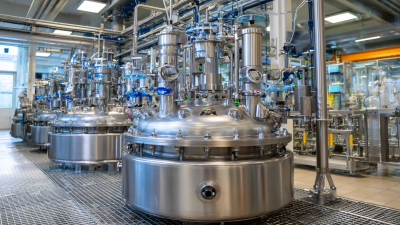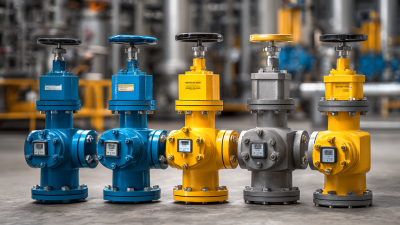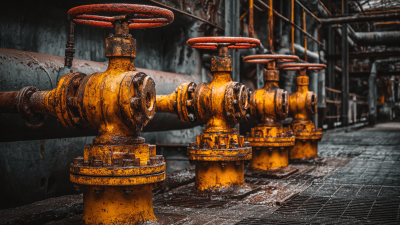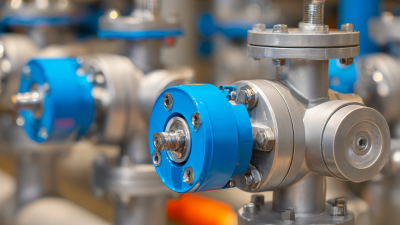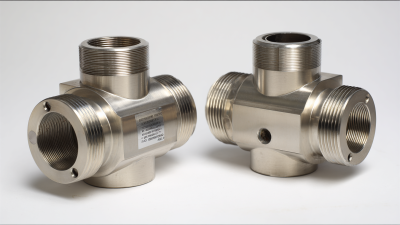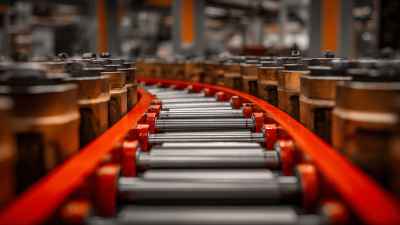
In today's fast-paced industrial landscape, maximizing efficiency is crucial for maintaining a competitive edge. One key component that plays a significant role in enhancing operational performance is the pneumatic actuator. These devices harness compressed air to produce motion, making them essential in various applications, from manufacturing to packaging.
 However, to fully reap the benefits of pneumatic actuators, it's vital to implement effective strategies that streamline their use and integration into existing workflows. In this blog, we will present a comprehensive checklist of top strategies designed to optimize the performance of pneumatic actuators in your operations.
By focusing on maintenance, selection, and system design, you can unlock the full potential of these powerful tools and drive greater efficiency in your processes.
However, to fully reap the benefits of pneumatic actuators, it's vital to implement effective strategies that streamline their use and integration into existing workflows. In this blog, we will present a comprehensive checklist of top strategies designed to optimize the performance of pneumatic actuators in your operations.
By focusing on maintenance, selection, and system design, you can unlock the full potential of these powerful tools and drive greater efficiency in your processes.
Pneumatic actuators are vital components in various industrial applications, providing reliable motion control through the power of compressed air. Understanding the basics of how these actuators work can significantly enhance operational performance. Essentially, pneumatic actuators convert energy from compressed air into mechanical motion, which can be linear or rotary. This process involves a cylinder, a piston, and air supply, allowing the actuator to perform tasks with speed and precision.
One of the key advantages of pneumatic actuators is their ability to deliver rapid movements, making them ideal for high-speed applications. Additionally, they offer excellent control over force and position, which is essential for tasks requiring accuracy. Operators should familiarize themselves with the common types of pneumatic actuators, including double-acting and single-acting models, to select the right one for their specific needs. Furthermore, regular maintenance and proper sizing of these actuators can prevent issues and ensure they operate at peak efficiency, ultimately leading to improved productivity in operations.
| Strategy | Description | Expected Outcome | Implementation Time |
|---|---|---|---|
| Regular Maintenance | Scheduled inspections and servicing of pneumatic systems. | Increased lifespan and reduced downtime of actuators. | Ongoing |
| Optimal Sizing | Selecting the appropriate actuator size for the application. | Improved efficiency and performance in applications. | 1-2 weeks |
| Use of Smart Sensors | Integrating sensors to monitor performance in real-time. | Enhanced control and predictive maintenance capabilities. | 1 month |
| Energy Recovery Systems | Implementing systems that recapture wasted energy from actuators. | Reduced energy costs and carbon footprint. | 3 months |
| Training and Development | Providing staff with training on new technologies and best practices. | Improved operational understanding and efficiency. | Ongoing |
 Pneumatic actuators play a vital role in various industrial applications, and understanding the key factors that influence their efficiency is essential for optimizing operations. One major factor is system pressure. According to a report by the International Society of Automation (ISA), operating at optimal pressure levels can enhance the response times of pneumatic systems by up to 30%. When the pressure is correctly calibrated, the actuator can achieve faster actuation cycles, leading to improved throughput and less downtime.
Pneumatic actuators play a vital role in various industrial applications, and understanding the key factors that influence their efficiency is essential for optimizing operations. One major factor is system pressure. According to a report by the International Society of Automation (ISA), operating at optimal pressure levels can enhance the response times of pneumatic systems by up to 30%. When the pressure is correctly calibrated, the actuator can achieve faster actuation cycles, leading to improved throughput and less downtime.
Another significant influence on efficiency is the actuator's size and type. A study conducted by the Pneumatic Institute found that improperly sized actuators could lead to energy waste, with inefficiencies increasing by as much as 25% compared to correctly sized units. Moreover, utilizing advanced materials for seals and fittings can reduce friction and leakage, further enhancing performance. Implementing these strategies not only maximizes the efficiency of pneumatic actuators but also contributes to sustainable operations, aligning with industry trends toward energy conservation and cost reduction.
When selecting the right pneumatic actuator for your operations, it is crucial to consider several key factors to maximize both efficiency and performance. According to a recent report by the International Society of Automation, properly chosen pneumatic actuators can enhance system responsiveness by up to 30%. This highlights the importance of aligning actuator specifications with application requirements, such as load capacity, stroke length, and environmental conditions. For instance, if an actuator is subjected to extreme temperatures or corrosive substances, selecting a model with appropriate materials and seals is essential to ensure longevity and reliability.
Additionally, the integration of smart sensors can significantly improve operational efficiency. A study by the Pneumatic Technology Association revealed that integrating smart actuators could reduce energy consumption by 25% while providing real-time data for performance monitoring. This data allows operators to make informed decisions and adjustments to optimize processes. Therefore, it's vital to evaluate not only the actuator type but also the technological advancements that can complement its performance, ensuring your choice leads to the highest productivity in your operations.
To ensure optimal performance and longevity of pneumatic actuators, a proactive maintenance approach is essential. Regularly scheduled inspections can help identify wear and tear early. Checking for air leaks and ensuring that all seals and fittings are intact is crucial in maintaining system pressure and efficiency. Additionally, monitoring the actuator's response times and stroke behaviors can highlight potential issues before they escalate into more significant problems that could lead to costly downtimes.

Implementing a predictive maintenance strategy by utilizing vibration analysis and temperature monitoring can further enhance the operational efficiency of pneumatic actuators. These technologies allow for real-time data collection, enabling operators to assess the health of the system continuously. Predictive maintenance minimizes unexpected breakdowns by addressing issues at their onset, ensuring that actuators perform optimally while reducing the likelihood of unplanned outages. By focusing on maintenance optimization techniques, organizations can significantly enhance the reliability and performance of their pneumatic systems, ultimately leading to increased productivity.
Integrating automation into pneumatic systems can significantly enhance operational efficiency. By implementing technologies such as sensors and control systems, businesses can optimize the performance of pneumatic actuators, ensuring precise movements and reducing response times. Automated systems can monitor real-time data, adapting operations to maintain optimal pressure and flow rates, which in turn minimizes energy consumption and wear on equipment.
Moreover, automated pneumatic systems can facilitate seamless communication between different components of an operation. By utilizing programmable logic controllers (PLCs) or advanced software solutions, organizations can create a synchronized workflow that enhances productivity. This integration allows for predictive maintenance, where potential failures can be identified before they disrupt production, further promoting a more efficient operational environment. With such automation, companies can not only streamline their processes but also reduce labor costs and increase safety in their workplaces, making pneumatic systems a pivotal component of modern industrial applications.
